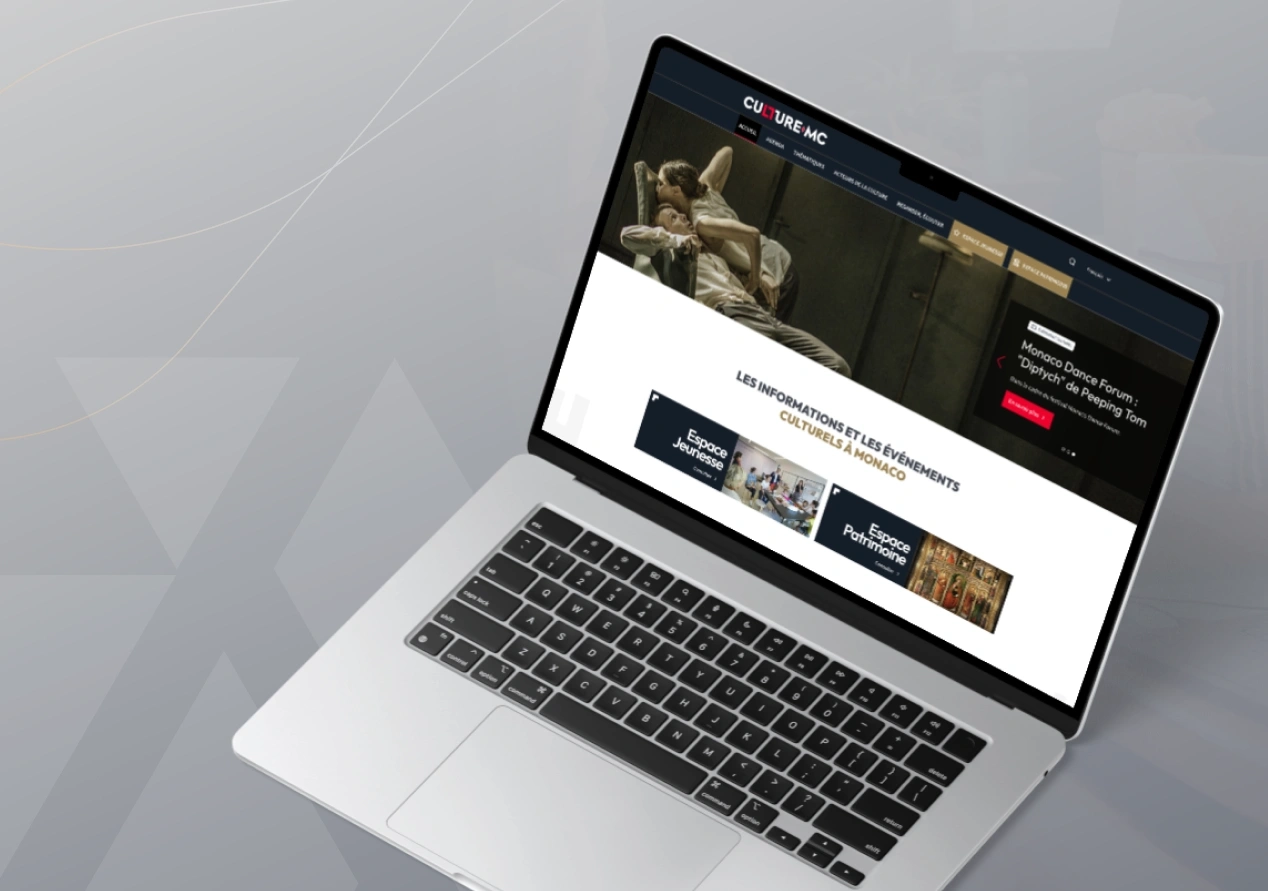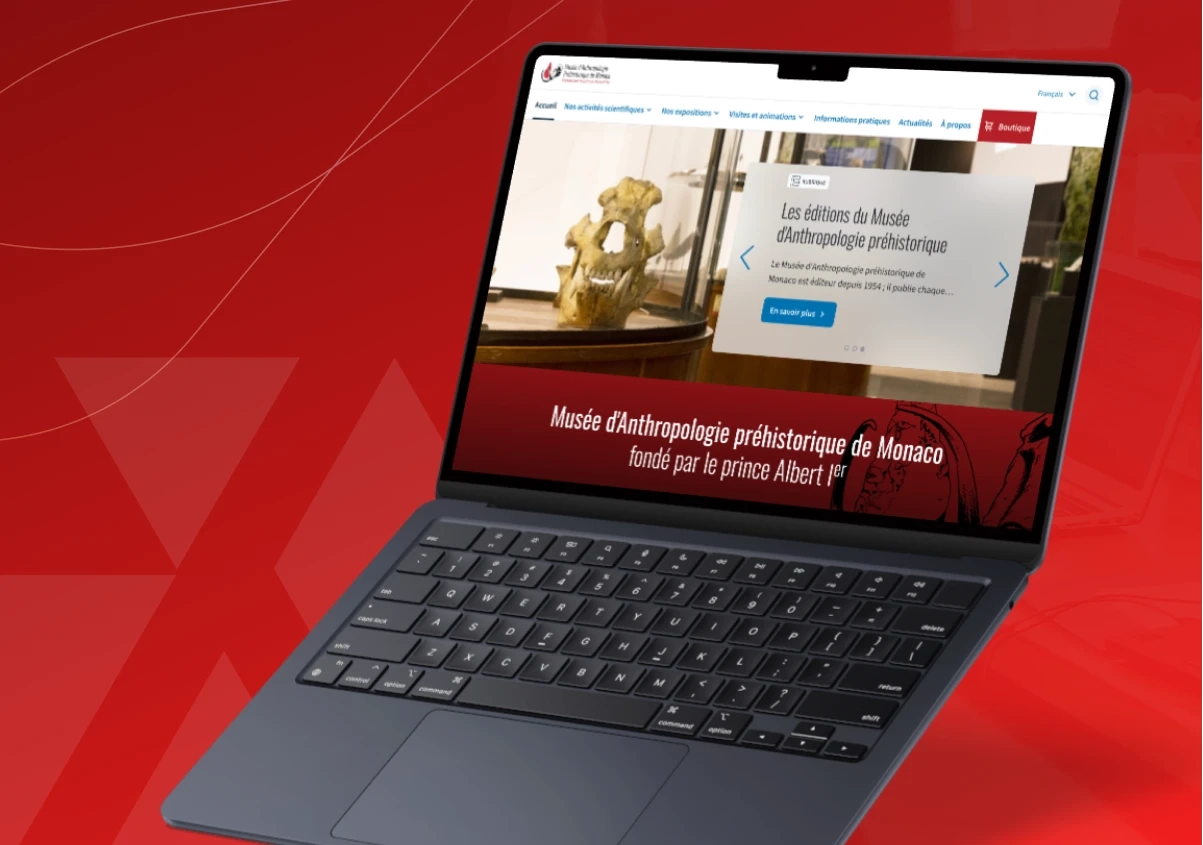

A website redesign involves modifying, restructuring or modernising an existing website to better meet the needs of users and the objectives of the company. Unlike creating a site from scratch, a redesign builds on an existing base (keeping the CMS, pages and functionalities).

The reasons for redesigning a website can be of various kinds:
Request a personalised quote for the creation of your website now and get a detailed cost estimate.
The first step in a successful redesign is to carry out a site audit. This performance analysis identifies what is working well and what needs to be improved.
Before embarking on the website redesign, ask yourself some questions and set yourself some objectives:
Remember that your objectives must be S.M.A.R.T. This is a method of structuring your ambitions by defining precise criteria. Each objective is Specific (precise), Measurable (quantifiable), Attainable (realistic), Relevant (aligned with your priorities), and Temporally defined (with a deadline).
“Je veux augmenter le trafic organique de 30 % en 6 mois en ciblant des mots-clés à fort potentiel dans notre secteur.”
“Je vais suivre l’évolution du trafic organique via Google Analytics, mesurer le taux de clics (CTR) des nouvelles pages optimisées, et analyser le taux de conversion généré.”
“Je dispose d’un budget suffisant pour investir dans la création de contenu SEO et dans une campagne de netlinking pour booster votre visibilité.”
“Cet objectif est aligné avec notre stratégie SEO, qui est d’attirer plus de leads qualifiés pour soutenir notre croissance commerciale.”
“Ce résultat devra être atteint dans les 6 prochains mois, avec une première évaluation des performances à mi-parcours, dans 3 mois.”
When creating a new site, it's a good idea to identify your target audience. By creating buyer personas, you can define typical user profiles. These profiles can be used to create targeted content, optimise user paths to encourage certain actions (purchase, contact, registration) and adapt the design and functions to the needs of each type of audience.
You can create your buyer personas in 2 ways: from existing Google Analytics / CRM data, or fromuser surveys (qualitative interviews with your customers to understand their needs, motivations and pain points).
Once the data has been collected, you need to group together users with common characteristics and create several personas. For example
The tree structure of a site represents the way in which the pages are organised. A well-constructed tree structure makes it easier for users to navigate and improves SEO. Start by defining the types of pages present on the site (home page, product or service pages, blog, about page). Organise the pages into hierarchical levels. The main pages target high-volume keywords and the secondary pages target long-tail keywords.


Once the structure has been thought through, the UX designer works on the design system. This brings together the visual elements that define thesite's identity and graphic charter: the colours, typography and brand logo. They then create wireframes and mock-ups of the main pages on mobile, tablet and computer.
A website redesign is an opportunity to review and optimise content. This stage involves optimising texts with the aim of improving visibility on search engines. Thecontent audit begins by analysing the existing texts: identifying those that generate traffic, those that need to be updated and those that need to be removed.
We then focus on keyword research. We identify the terms searched for by the target audience using Google Keyword Planner or SEMRush. These words are integrated naturally into the titles, subtitles and content.
The writing of content is both human and technical. It is geared towards users' needs, meaning that each page responds to a specific search query. To meet the requirements of search engines, the YourTextGuru tool is used to enrich the semantics of content.
It is advisable to structure texts using HTML title tags (H1, H2, H3) to improve readability. Don't forget to use calls to action (CTA) to encourage conversions. Finally, the media on your pages can be optimised in a number of ways: their format (WebP), their size (compression), and the addition of alt tags.
Technical integration is carried out using the specifications. This involves transforming the mock-ups and specifications into a functional site, in compliance with good technical practice.
The choice of CMS and the technologies to be used is guided by the needs identified in the specifications. For example, if the site requires advanced functionalities such as a personalised customer area or extensive content management, a powerful CMS such as Ibexa DXP will be preferred. For standard needs, solutions such as WordPress or Drupal, combined with plugins, will suffice.
The development phase continues with theintegration of the elements in accordance with the mock-ups validated beforehand. The developers ensure that the site is responsive on mobile, tablet and PC devices.
Security measures are put in place for the developed site. An SSL certificate has been integrated, along with a cyber-attack protection system, a back-up module and a cookie system via a consent management platform (CMP).
Is your site performing well? Get a diagnosis and identify your areas for SEO optimisation.
The migration of a website is a sensitive stage which, if poorly executed, can lead to a loss of traffic and harm natural referencing. The migration plan and URL redirections help to bridge the gap between the old and the new site while preserving the "SEO power of the pages".
To draw up a migration plan, start by listing the existing URLs. Using crawling tools such as Screaming Frog, we identify the pages that are indexed by search engines, as well as those that generate traffic or have backlinks. We then create a file containing the old URLs and their corresponding new URLs. This document is imported into the CMS to create 301 redirects between the pages.
The acceptance and user testing phase is used to detect any anomalies, adjust functionality and validate that the site meets the expectations defined in the specifications.
The technical acceptance phase involves checking that all the elements of the site are working properly: forms, customer areas, payment modules, internal search engines, loading speed and security standards. Compatibility tests are carried out on different browsers (Chrome, Firefox, Safari, Edge) and mobile, tablet and desktop devices.
User testing involves observing how real users interact with the site. This stage enables us to validate the fluidity of navigation paths, the effectiveness of calls to action (CTAs) and the comprehensibility of content. Involving users who are representative of the buyer personas (discussed above) enables us to gather feedback on the points of friction and/or possible improvements.
Before you can analyse the site's performance effectively, you need to have connected it to Google Analytics or Matomo, as well as to Google Search Console. These tools can be used to monitor overall traffic, conversion rate, bounce rate, page load speed and SEO positioning for strategic keywords. Page indexing is checked for 404 errors and to ensure that all redirects are working correctly.
The redesign must be followed byongoing optimisation of content in line with the way Google interprets and classifies pages. SEO performance and organic traffic-generating queries are analysed.
It is advisable to publish new blog posts on a regular basis to enrich the content and boost SEO. Under-performing pages should be optimised by working on semantics, refining titles and meta-descriptions, and strengthening internal linking to improve the transmission of SEO authority between pages on the site.


Corporate
Discover the culture.mc website, a platform dedicated to promoting cultural events in Monaco. The site brings together all the latest cultural news, whether for the general public, young people or heritage enthusiasts.


Corporate
Discover the website of the Musée d'Anthropologie préhistorique de Monaco, a scientific museum in Monaco illustrating the history of prehistory.